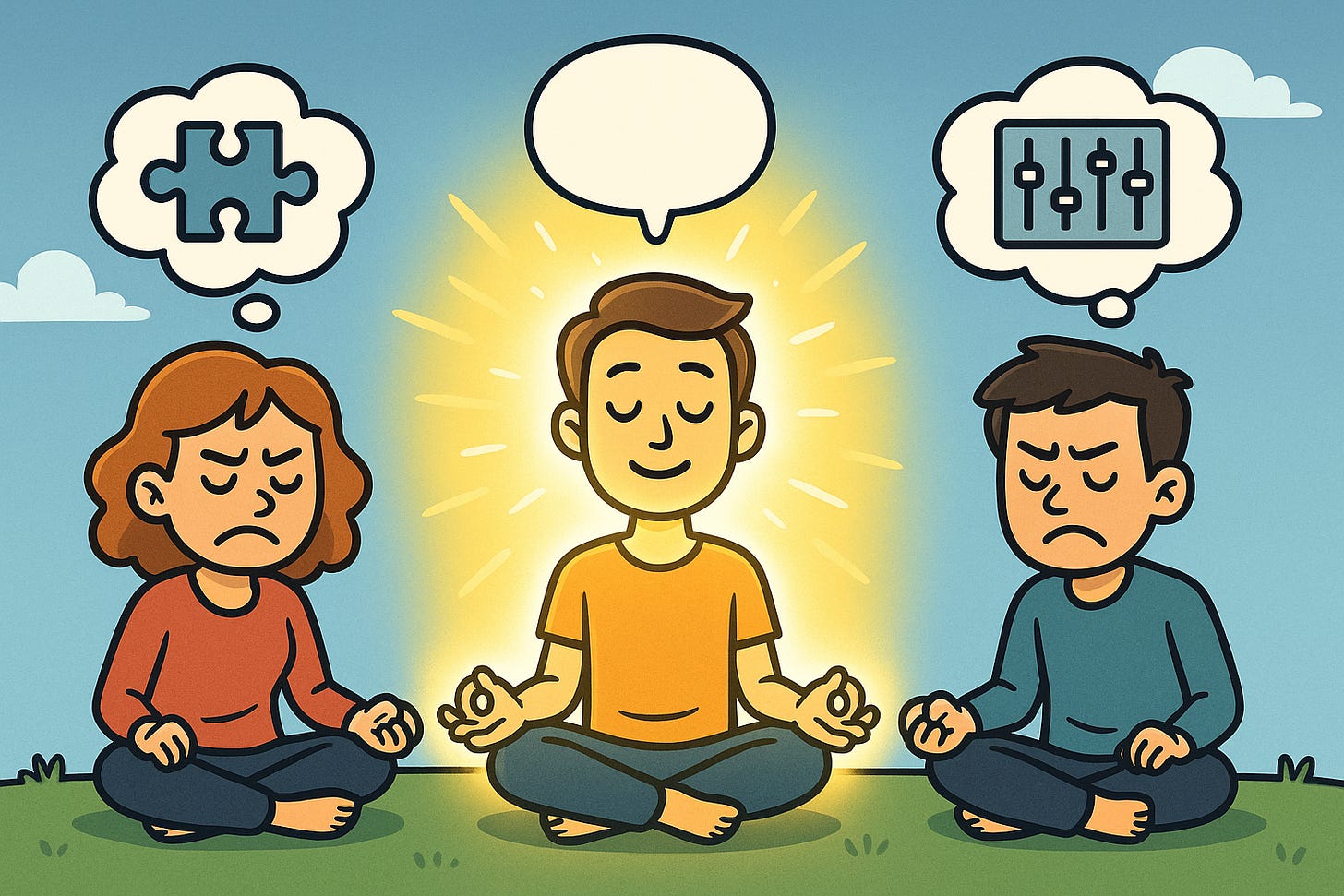Tao Te What Now? (Chapter 27)
Mastering the Tao.
So you’ve decided to read the Tao Te Ching.
Either you’re seeking peace, chasing enlightenment, trying to out-vibe your therapist, or you just like obscure philosophy that makes you feel smart and dumb at the same time.
Good news: you’re in the right place.
Bad news: it won’t help you get your life together in the way you think it will.
Better news: it might show you that you never had to in the first place.
This ancient Chinese text, written by Laozi around 2,500 years ago, is basically a poetic mic drop about the nature of reality, control, ego, and why trying hard often makes things worse. It’s short, mysterious, non-linear, and aggressively subtle. You won’t get it all on the first read. That’s part of the charm. It’s also part of the test. Which you are not supposed to try to pass.
About This “Cursed” Interpretation
We’re going to go through each chapter, one by one.
Instead of solemn chanting or incense or “sitting with it in silence,”
We’re going to translate it for actual humans with internet-fried brains, executive dysfunction, and a fondness for sarcasm.
Disclaimers:
We love the Tao. We also enjoy poking fun at ourselves while getting deep. That’s the spirit this was written in.
If you're looking for academic accuracy or lineage-specific devotion… this isn’t that.
If you're spiritually curious, allergic to self-serious gurus, and suspicious of people who wear too much linen—welcome home.
Chapter 27
Mastering the Tao
A master photographer needs zero Photoshop time. One photo: perfect exposure, perfect composition, perfect timing. Legend says they didn’t even use a camera.
A master carpenter leaves no seams. The joints hold themselves together like they remember being a tree. The off-cut box? Empty. Inbox zero. Always.
A master live-sound engineer creates the space, not just the sound. You don’t even think about them. (But I see you.)
A master therapist doesn’t need small talk or boundary worksheets. They say one sentence, just one, and your entire emotional architecture folds in on itself like a paper swan meeting a candle. And you say: “Oh. Right. That...”
The best app uses no code. Nothing to debug. Nothing to scale.
The best UX has no UI. The app opens. The user forgets there was ever a problem.
Therefore:
A Tao master doesn’t fix people. They don’t diagnose, optimize, or explain. They just don’t abandon you. They hold space for you. And somehow, everyone gets saved.
They don’t end up on Hoarders. But they never seem to have trash to take out either.
This, all of this (gestures around wildly), is what it means to follow “discernment”.
Or if that’s too abstract, you can think of it as:
Listening to your prefrontal cortex (Neuroscience)
Listening to the “still, small voice” – 1 Kings 19:12 (Christianity)
Listening to the clarity that arises when you’re not tangled in craving or fear (Buddhism)
Listening to the spark of holiness in everything (Hasidic Judaism)
Listening to the heart that remembers the Beloved (Sufism)
Listening to the Self beneath the self (Vedanta)
Listening to the Logos (Stoicism)
Listening to the call of shared humanity (Secular Humanism)
Listening to the quiet wisdom of the integrated self (Jungian)
Listening to the silent awareness itself (Nonduality)
So:
Those who don’t yet hear this? Learn from those who do.
Those who do? Your canvas is everyone else.
And yet, this isn’t even about lessons of the Tao, nor is it about “loving your student.” (That would make it sentimental. This isn’t sentimental.) It’s 100% about the “quiet part”. About not walking away. About knowing when nothing needs doing, and doing exactly that. Which might sound confusing, but you’ll understand once you stop thinking about it. Shhh…🤫
We love paradox here. It’ll click. Eventually.
“It’s in the game.” — EA Sports, accidental Taoist


